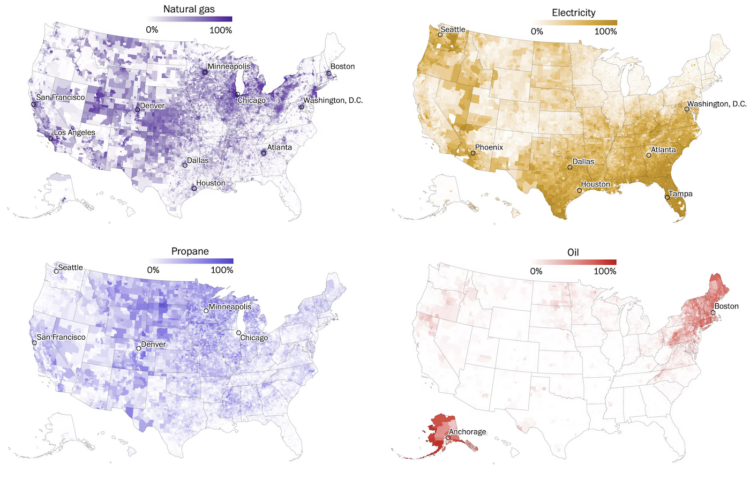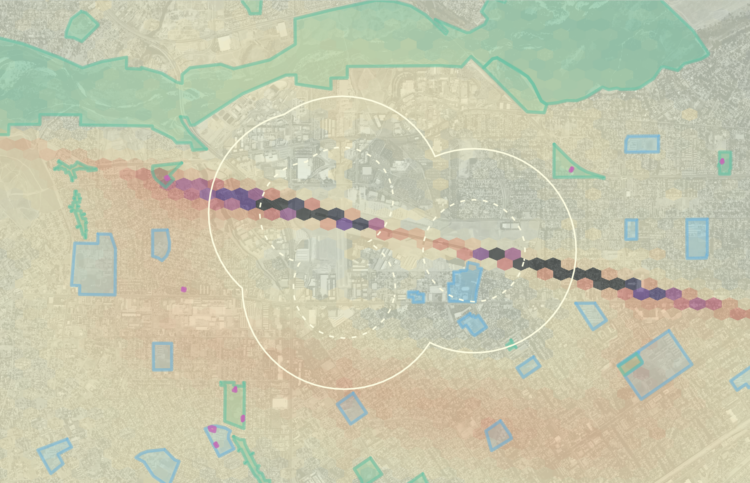For The Washington Post, John Muyskens, Shannon Osaka, and Naema Ahmed mapped the main ways that Americans heat their homes:
Thanks to a combination of local climates, electricity prices and historical accident, America’s home heating system, like the country’s politics, is deeply divided. In the South, thanks to government funding from almost a century ago and mild climates, many rely on electricity to stay warm. The Midwest is dominated by natural gas and, in rural areas, propane. In the Northeast, despite high prices and inconvenience, fuel oil still heats many homes.
Tags: fuel, heating, Washington Post

